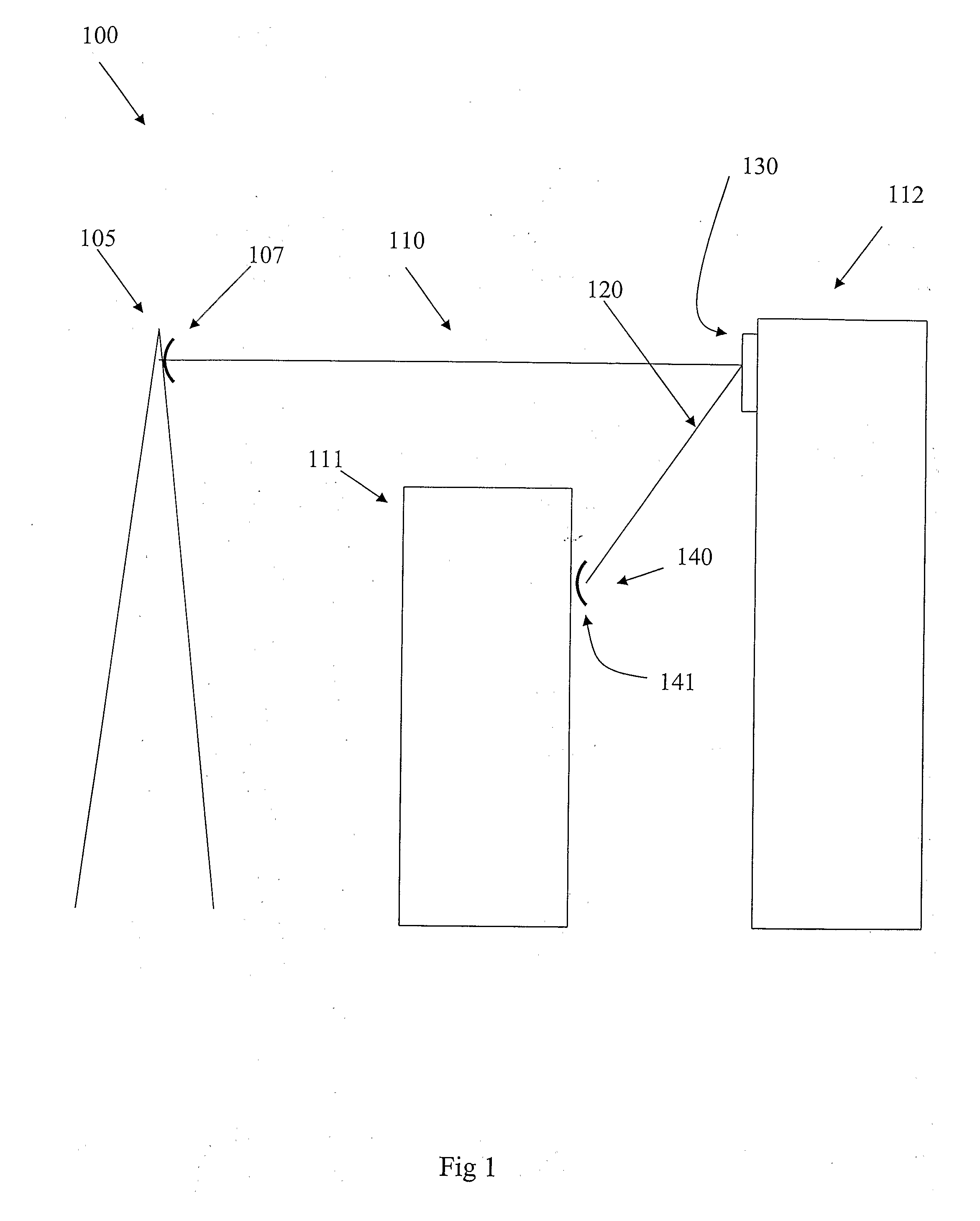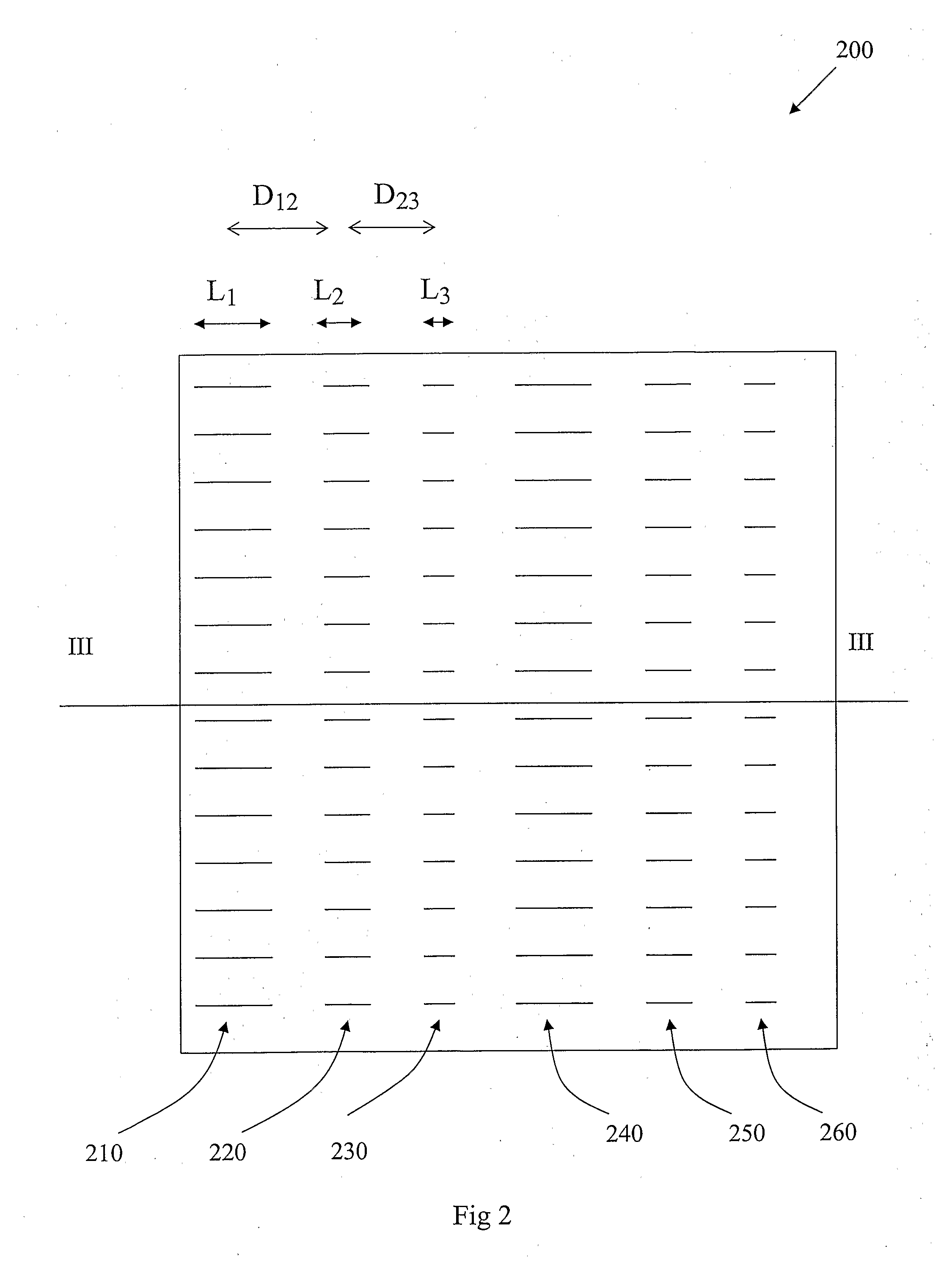Passive repeater antenna
a repeater antenna and repeater technology, applied in the field of passive repeater antennas, can solve the problems of limiting the usefulness of the reflector, difficult to find a suitable installation site, etc., and achieve the effects of low loss, low cost of production, and high directivity
- Summary
- Abstract
- Description
- Claims
- Application Information
AI Technical Summary
Benefits of technology
Problems solved by technology
Method used
Image
Examples
Embodiment Construction
[0017]In FIG. 1, a system 100 which uses the invention is shown schematically. A radio base station (RBS) 105 is intended to cover a cell in a mobile telephony system. Within the cell, there is an area which the RBS 105 cannot cover, either due to a high concentration of users in that area, so that the capacity of the of the RBS isn't sufficient, or due to the fact that the Line Of Sight (LOS) from the RBS to the area is obscured by, for example high-rise buildings. In FIG. 1, the area is shown as being obscured from the RBS by a building 111.
[0018]Naturally, the two factors mentioned can also occur in combination, an area with a high concentration of users can be obscured by buildings or other obstacles.
[0019]As shown in FIG. 1, there is an additional RBS 140, installed on a structure 111 such as a building, in order to help the RBS 105 cover the area in question. This additional RBS 140 can be a so called “micro” or “pico” base station, i.e. a base station with reduced capacity co...
PUM
 Login to View More
Login to View More Abstract
Description
Claims
Application Information
 Login to View More
Login to View More - R&D
- Intellectual Property
- Life Sciences
- Materials
- Tech Scout
- Unparalleled Data Quality
- Higher Quality Content
- 60% Fewer Hallucinations
Browse by: Latest US Patents, China's latest patents, Technical Efficacy Thesaurus, Application Domain, Technology Topic, Popular Technical Reports.
© 2025 PatSnap. All rights reserved.Legal|Privacy policy|Modern Slavery Act Transparency Statement|Sitemap|About US| Contact US: help@patsnap.com



